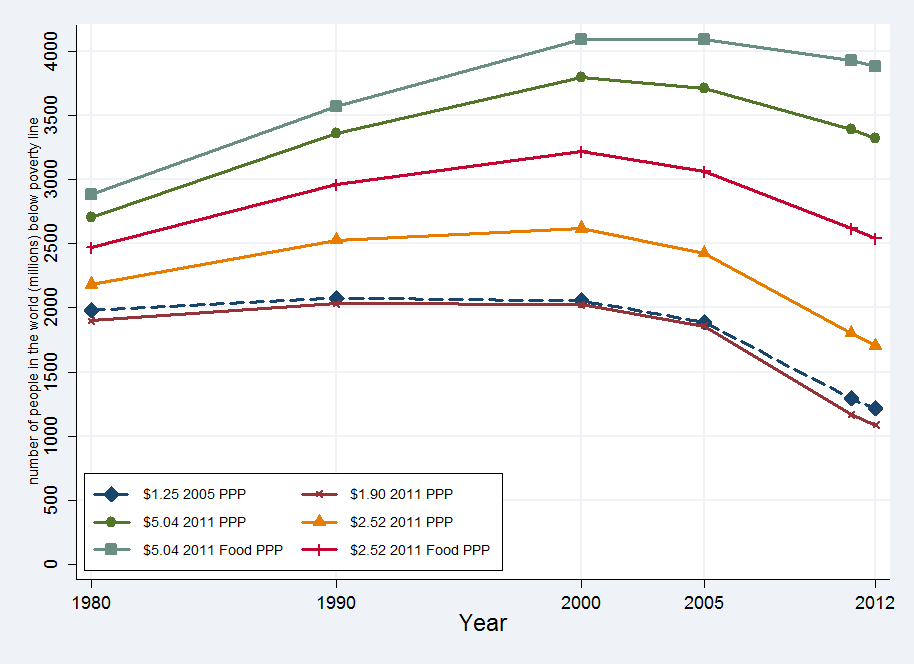The World Bank’s global
poverty estimates suffer from deep-seated problems arising from a single source, the lack of a standard for identifying who is poor and who is not that is consistent and meaningful.

The new choice of an international poverty line of $1.90 (2011 PPP) does not in any way resolve these problems. We present alternate estimates of global, regional and national poverty based on reasoning as to what the Bank’s own method, consistently applied, would entail. These show an increase in the absolute number of poor since 1980 or 1990 for certain choices of poverty line. However, we recommend an approach to income poverty assessment that is altogether different, focusing directly on identifying the real requirements of human beings to attain income-dependent human capabilities.
In a long anticipated decision, the World Bank has just announced new global estimates of poverty, based on its new international poverty line (IPL), fixed by the Bank at $1.90 in 2011 PPP dollars. The latest announcement is a disappointment. Once again, the Bank has adopted an approach that locks in previous mistakes, making minor modifications while in no way addressing the deeper criticisms that call for attention.The result is a set of results that, despite their seeming technical imprimatur, should enjoy little credibility. The Bank’s global poverty estimates suffer from deep-seated problems arising from a single source — the lack of an evaluative standard for identifying who is poor and who is not that is consistent and meaningful. The new choice of an international poverty line does not in any way resolve these problems. The poverty line has been claimed to “preserve the real purchasing power of the previous line (of $1.25 a day in 2005 prices) in the world’s poorest countries”, but we argue that these poverty lines do not adequately correspond to each other or to any appropriate substantive meaning. Estimates of global poverty are very sensitive to small changes to the IPL. The Bank’s approach also suffers from a host of other issues too, which make the global poverty estimates, insufficiently reliable and informative.
We present alternate estimates of global, regional and national poverty based on reasoning as to what the Bank’s own method, consistently applied, would entail. Our estimates based on this premise show that 57 percent of the global population (3.8 billion people) live below a poverty line which corresponds to a still very stringent alternate conception of elementary human requirements. The absolute number of poor has increased in 2012 as compared to 1980 or 1990 for various choices of poverty line. The rate of poverty decline is also significantly lower in our alternative poverty line estimates when compared to that resulting from the Bank’s IPL. Despite presenting these estimates, we recommend that we ultimately approach income poverty assessment that departs from the Bank’s money-metric approach altogether, focusing instead directly on identifying the real requirements of human beings to attain income-dependent human capabilities.





